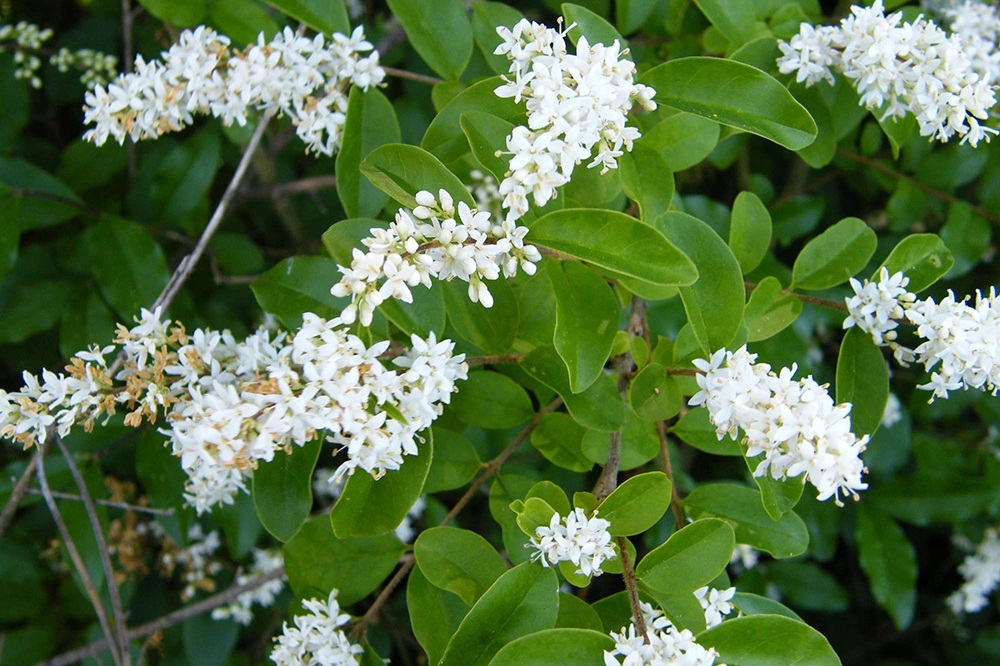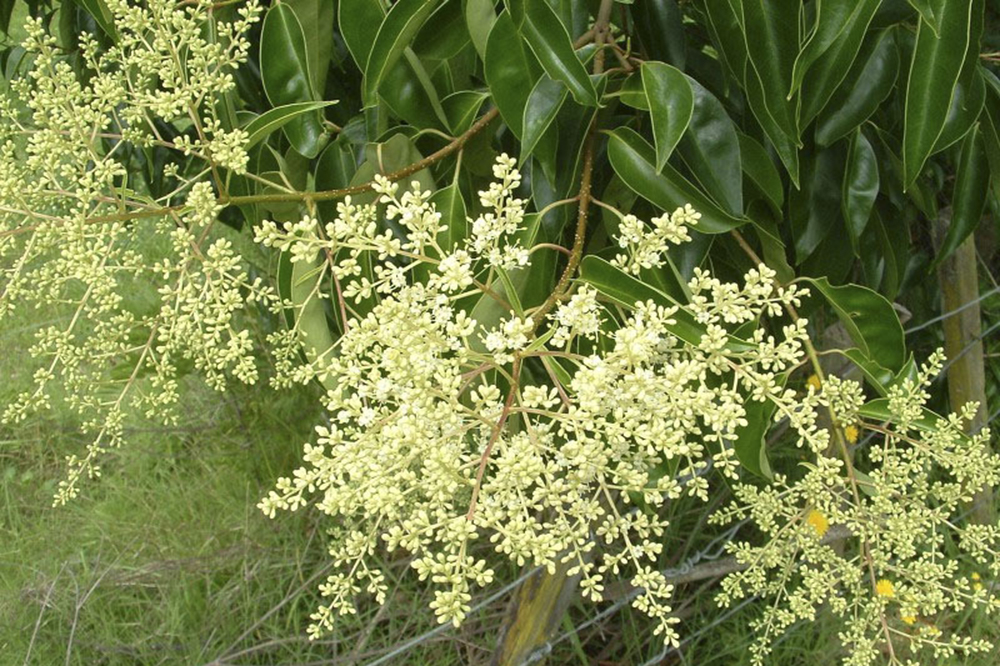Story
How to avoid a summer full of allergy misery
Summer is finally here, and with it comes longer days, gorgeous weather, and unfortunately for many, allergies. Two of the worst culprits that get our noses running during and our eyes watering during summer are Chinese privet (Ligustrum sinense) and tree privet (Ligustrum lucidum). As well as being an allergy trigger, these pest plants produce large amounts of bird dispersed seeds and have major impacts on native ecosystems they invade; double the incentive to take action to wipe out these nasty weeds.
Which privet is that?
Chinese privet only grows to about three metres tall, and is the ‘small-leaved one’. It starts flowering in October, with a mass of tiny, white and smelly flowers arranged in drooping clusters. It can keep on flowering into the summer. The flowers are followed by round, green berries that later turn dull purplish black. It is pretty adaptable, invading roadsides, marginal pasture, cliffs and coastlines, and the sub-canopy of scrub and bush. It was often planted in gardens when we didn’t know any better, and you also quite often find it planted as a hedge!

Chinese privet in flower.
Tree privet is much larger than Chinese privet, growing up to 10 metres tall. It has larger leaves (similar in size to a camellia leaf), and its stems and leaf stalks are often a deep maroon red. It typically flowers over January/February, causing misery for many summer travellers and holidaymakers alike. The small cream coloured flowers give the trees a creamy-yellow look when flowering en masse. Tree privet will invade coastal and lowland forests, shrublands, cliffs and coastlines – often in or near sites of human habitation where it was originally planted, again by someone who thought it was a good idea at the time.

Tree privet in flower.
How to deal to it
When using herbicide, please make sure to protect yourself and others by gearing up, reading labels thoroughly and following all instructions and safety requirements.
- Dig out small plants.
- Cut low and treat stumps immediately with one part glyphosate to five parts water.
- For larger shrubs and trees, you can drill holes (use a 12-14mm drill bit) at 200mm intervals around the base of the trunk and fill with undiluted glyphosate (take extra care when using high strength or undiluted herbicides). Do not kill trees standing if they might fall on property or people. Trees in those locations need to be felled professionally.
- You can also spray seedlings with 100ml glyphosate plus 10ml penetrant (e.g. spray fix) to 10 litres water.
For more information about pest animals or plants, contact Northland Regional Council on 0800 002 004 and ask to speak to a biosecurity officer, or visit: www.nrc.govt.nz/pestcontrolhub
